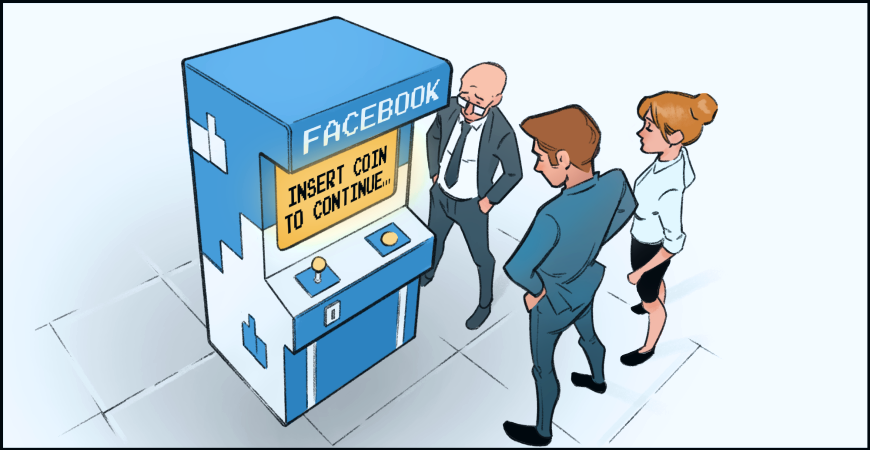There’s no doubt that today’s social media environment is a looking a lot different these days.
It’s much more of a Hunger Games-style dystopian landscape than a Disney musical where things magically come together.
It’s time to face facts – Facebook is pay to play. Even if you’ve only boosted one post for your organisation or client, chances are the lingering effects of that post tanked any subsequent organic post because now the social media giant knows you have the cash to spend.
Which might explain why your social media manager is looking a little more stressed these days and has stopped bragging about ‘reach’ and ‘engagement’. Those pie charts just aren’t as full of good news as they used to be.
Essentially, the good old days of being able to report percentage increases in organic reach and engagement are long gone.
Pair this with the insight that Facebook essentially doesn’t want users to leave the platform and is reducing the reach of external links and it’s likely time to rethink your social media strategy.
Don’t believe me? Try a long-form social media post versus a traditional link and see what happens.
Now, one clever workaround, displayed beautifully by the social media team at ABC Perth, involves a longform post with a picture. This tactic allows readers to engage and consume the content before scrolling on.
Not only has this boosted engagement for the ABC – just look at the number of reactions and comments – but there is nothing stopping the team from circling back and adding a shortened link later in the day.
The same tactic is used by News.com.au, which has gone so far as to add customised URLs to their links. Brand, after all, is everything.
But it does beg the question, what are you trying to achieve with your social media? Are you working to boost website traffic, promoting a brand, or building engagement? Each of these these goals will require a different, strategic approach.
You can no longer handball socials to the work experience kid just because they’re young and ‘supposed to know about these things’.
It’s not all bad news. These changes can give rise to creativity and new ways of reaching a content-fatigued audience which has grown far more sophisticated since the first cat video was posted on Facebook.
If you want to boost your engagement numbers (and who doesn’t) then authenticity is the key. The trick is to have content that audiences have an emotional connection with that doesn’t seem contrived.
Just look at this example from Lifeline WA. Many organisations have fallen into the habit at some point or another of grabbing a stock image and pushing it out on social, but this post shows how real, authentic content resonates and speaks for itself.
This video is just five seconds long. But it captures the quintessential Perth landscape which tells viewers that this is home and the crowds of people standing at Kings Park conveys the feeling of being part of a community. It triggers a feeling of authentic connection, genuine interest and caring about the cause.
Just because we’ve identified a need for authenticity (which is easier said than done), that doesn’t mean to say that the days of clickbait are over. Far from it. When it comes to those who will persist in trying to drive both clicks and engagement, expect what journalists call the ‘sell’ of a story to get even more compelling.
Clickbait is a fine art and an effective one, but there are risks to taking sensationalising content too far. And while we’re on the subject of trust and sneaky tactics, some would also go so far as to suggest that a step into dark UX tactics isn’t too far behind. Watch this (social media) space.
 ReGen Strategic
ReGen Strategic